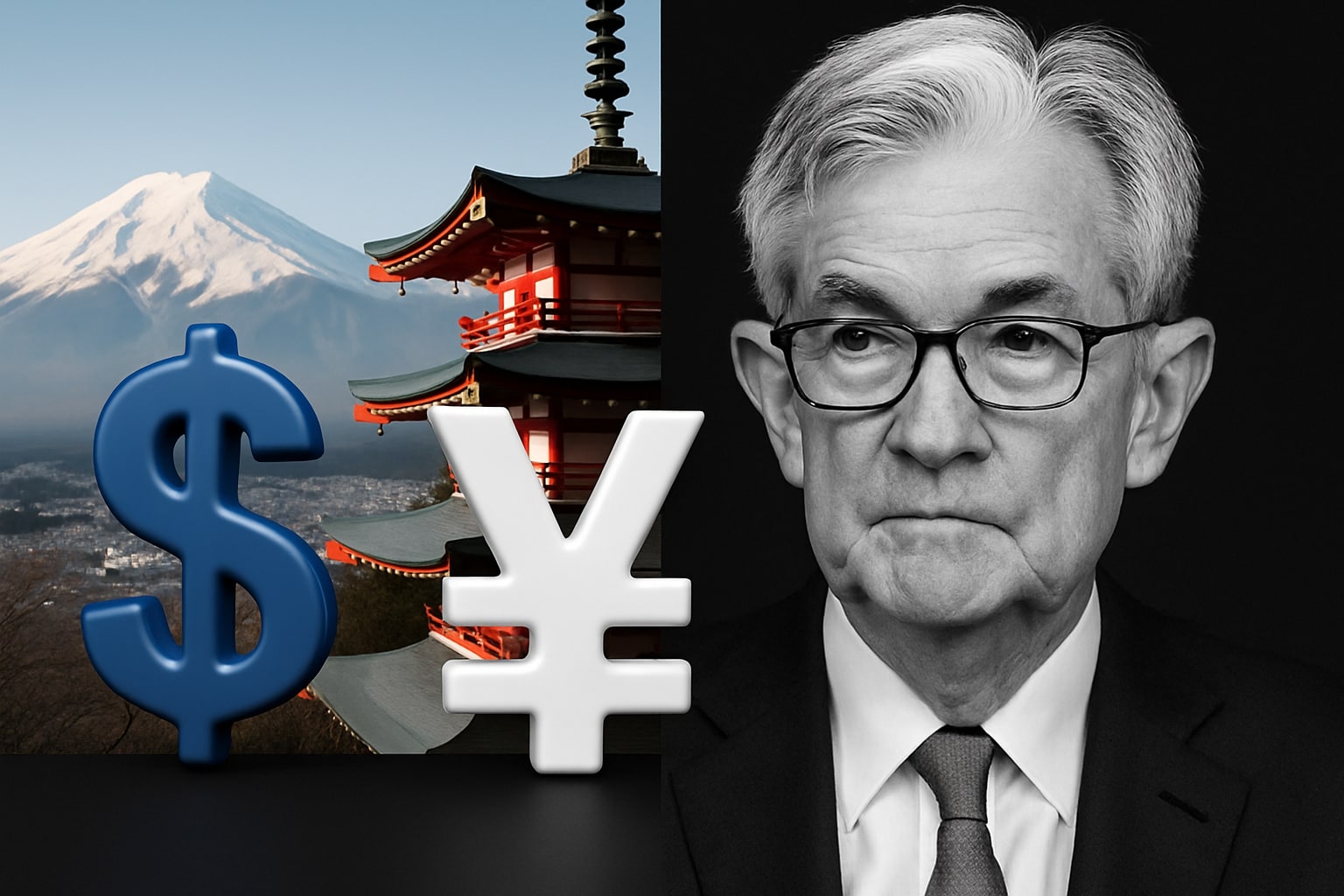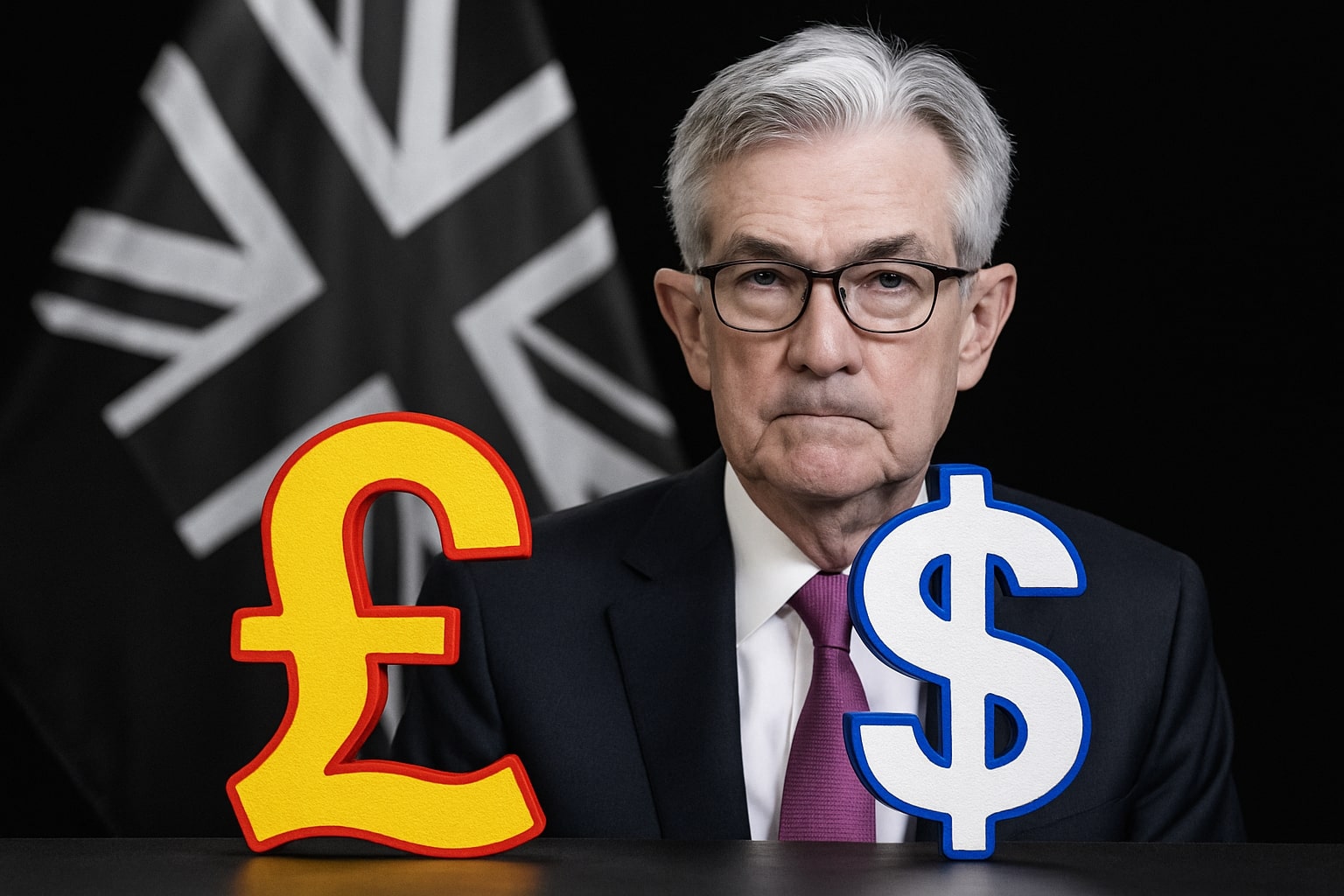
USD/JPY Price Forecast - Yen Consolidates Around 153.60 as Range Breakout Setup Drive Market Focus
Dollar-Yen trades within 153.30–154.40, rebounding from 152.94 lows, supported by ADP jobs +42K, ISM Services 52.4, and a persistent 4.75% U.S.–Japan yield gap | That's TradingNEWS
USD/JPY (FX:USDJPY) – Dollar-Yen Consolidates Below Key Resistance as Fed-Yield Advantage Keeps Bulls in Control
The USD/JPY pair remains tightly coiled within a defined structure, oscillating near 153.60–153.90, as traders balance U.S. economic resilience against Japan’s entrenched monetary divergence. Despite short-term volatility driven by the ADP employment report (42,000 new jobs in October) and ISM Services PMI (52.4), the broader tone stays bullish. The Japanese Yen continues to weaken as the Bank of Japan (BoJ) refuses to abandon its ultra-loose policy, while U.S. Treasury yields remain anchored near 4.10%—creating a persistent carry-trade premium in favor of the Dollar.
Market Context and Structural Dynamics
After hitting an intraday low of 152.94, USD/JPY swiftly rebounded to a session high of 154.35, underlining the pair’s well-defined range between 153.30 and 154.40 cited by UOB Group analysts. Over the past two weeks, the Dollar-Yen has stabilized within a wider 152.40–154.40 corridor, signaling a mature consolidation phase within its nine-month uptrend. Despite brief dips, every pullback continues to attract dip-buying from yield-seeking investors exploiting the 4.75%–5.00% U.S.–Japan interest-rate differential.
The latest FX positioning data shows leveraged funds maintaining heavy long exposure, consistent with CFTC reports of net speculative longs near their highest since 2022. Meanwhile, volatility in Yen options has narrowed to 8.2%, reflecting market confidence that the BoJ will not intervene below ¥155, even as pressure builds on the Ministry of Finance to stem the currency’s decline.
Bank of Japan’s Reluctance Keeps Yen Fragile
Governor Kazuo Ueda continues to reiterate that inflation momentum remains fragile and wage growth “not yet self-sustaining.” As such, the BoJ maintains its yield-curve control (YCC) and near-zero rates despite headline inflation hovering around 2.8%. This stance widens the yield gap with U.S. Treasuries, encouraging capital outflows and keeping the Yen near its weakest levels since 1986. Domestic investors are shifting further into U.S. corporate and sovereign bonds, while Japanese exporters hedge minimally, leaving USD/JPY structurally supported.
Japan’s Household Spending rose 2.5% in the latest report—beating expectations but insufficient to alter policy direction. The BoJ’s dovish bias now underpins the Yen’s role as a funding currency, sustaining the global carry trade cycle.
Technical Framework and Price Behavior
The pair’s structure, mapped by Michael Boutros (City Index/FOREX.com), shows USD/JPY trading within an ascending pitchfork drawn from October lows. The lower boundary converges near 153.08–153.27, marking crucial short-term support. A decisive daily close below that level could trigger a deeper retracement toward 151.63–151.95, coinciding with the 61.8% Fibonacci retracement of the yearly range. Further losses could extend to the July high-close (150.74) and September pivot (149.81) if momentum shifts sharply risk-off.
Conversely, a sustained close above 154.82—the 78.6% retracement of the April advance—would confirm breakout continuation, targeting 156.27–156.44, followed by the 2025 yearly open at 157.19. Momentum indicators remain constructive: RSI on the 4-hour chart holds around 47–50, while the 20-EMA is flattening, suggesting a neutral-to-bullish bias. The price remains above its 50-day moving average at 152.90, validating trend persistence.
Fed Divergence and U.S. Macro Influence
The Federal Reserve’s tightening stance, though slower, still contrasts sharply with Japan’s inaction. The recent ADP report (+42K) and ISM Services PMI (52.4) reinforced the narrative of steady U.S. economic expansion. Core inflation indicators are cooling but remain near 3.2% YoY, deterring rate cuts in the short term. Fed officials, including Barr, Williams, Waller, and Hammack, continue to warn that achieving the 2% inflation target could take “two to three years,” maintaining upward pressure on U.S. yields.
This macro divergence keeps USD/JPY buoyant. Even modest yield differentials—currently around 370 basis points on 10-year Treasuries versus JGBs—translate into relentless Yen selling. Unless the BoJ signals a rate adjustment or the Fed pivots decisively dovish, the Dollar’s advantage remains entrenched.
Market Psychology and Technical Setup
Market sentiment leans cautiously bullish. Traders are watching the 153.70–153.90 Fair Value Gap (FVG) highlighted by ACY Securities as the short-term liquidity pocket defining buyer control. If price action rejects that zone to the upside, USD/JPY could retest 154.80–155.30, with upside extensions to 156.00 if momentum accelerates. However, a break below 153.30 could ignite short-term liquidation toward 152.80–152.00, aligning with prior liquidity lows and untested demand.
Candle patterns on the 4-hour chart show a spinning top followed by a bearish engulfing, revealing indecision but no conviction for a reversal yet. Volume data confirms lower participation during declines—typical of consolidations before continuation.
Macro Liquidity and Institutional Behavior
Global funds continue to exploit the carry-trade dynamic. Japanese pension funds and insurers are net buyers of U.S. bonds, and retail margin data from the Tokyo Financial Exchange shows Yen shorts expanding by over 17,000 contracts in the past week. Despite minor interventions earlier this year, the Ministry of Finance has refrained from major Yen purchases since the pair breached 150.00, suggesting tolerance for gradual depreciation so long as volatility remains contained.
At the same time, U.S. institutional investors are rotating into short-volatility and carry strategies, reinforcing Yen weakness. The interest-rate swap spread between USD and JPY 2-year tenors stands near 470 basis points, historically consistent with a USD/JPY above 153.50.
Read More
-
JEPQ ETF Holds $58.82 as Fund Flows Cool and Nasdaq Valuations Stretch
06.12.2025 · TradingNEWS ArchiveStocks
-
XRP ETFs Cross $1 Billion AUM as XRPI and XRPR Lead Institutional Wave
06.12.2025 · TradingNEWS ArchiveCrypto
-
Natural Gas Price Breakout: NG=F Soars to $5.50 on Cold U.S. Weather & LNG Export Boom
06.12.2025 · TradingNEWS ArchiveCommodities
-
USD/JPY Price Forecast - Dollar to yen Slides to 155.60, BOJ Hike Reprice Global Currency Markets
06.12.2025 · TradingNEWS ArchiveForex
Forward Scenarios and Strategy View
If U.S. yields maintain altitude and Japan’s policy remains frozen, USD/JPY is primed for an upside break beyond 154.82. A successful breakout could target 156.30–157.20 over the coming month. Short-term traders eye 154.40 as the trigger level for renewed buying. Alternatively, a close below 153.00 would signal distribution and a test of 152.20–151.60 before the next rebound.
While Fed rhetoric and U.S. data will dominate near-term direction, the structural uptrend remains intact. The path of least resistance continues upward, reflecting enduring rate differentials and limited Japanese policy action.
TradingNews Decision: BUY – Bullish Bias Maintained
TradingNews.com maintains a BUY rating on USD/JPY, with near-term accumulation favored above 153.30 and bullish targets at 154.80–156.00. The bias turns neutral only on a daily close below 153.00. The technical structure, macro backdrop, and positioning consensus all align for continued strength, with the next decisive move hinging on whether bulls can sustain momentum through the 154.82 resistance threshold into mid-November.



















